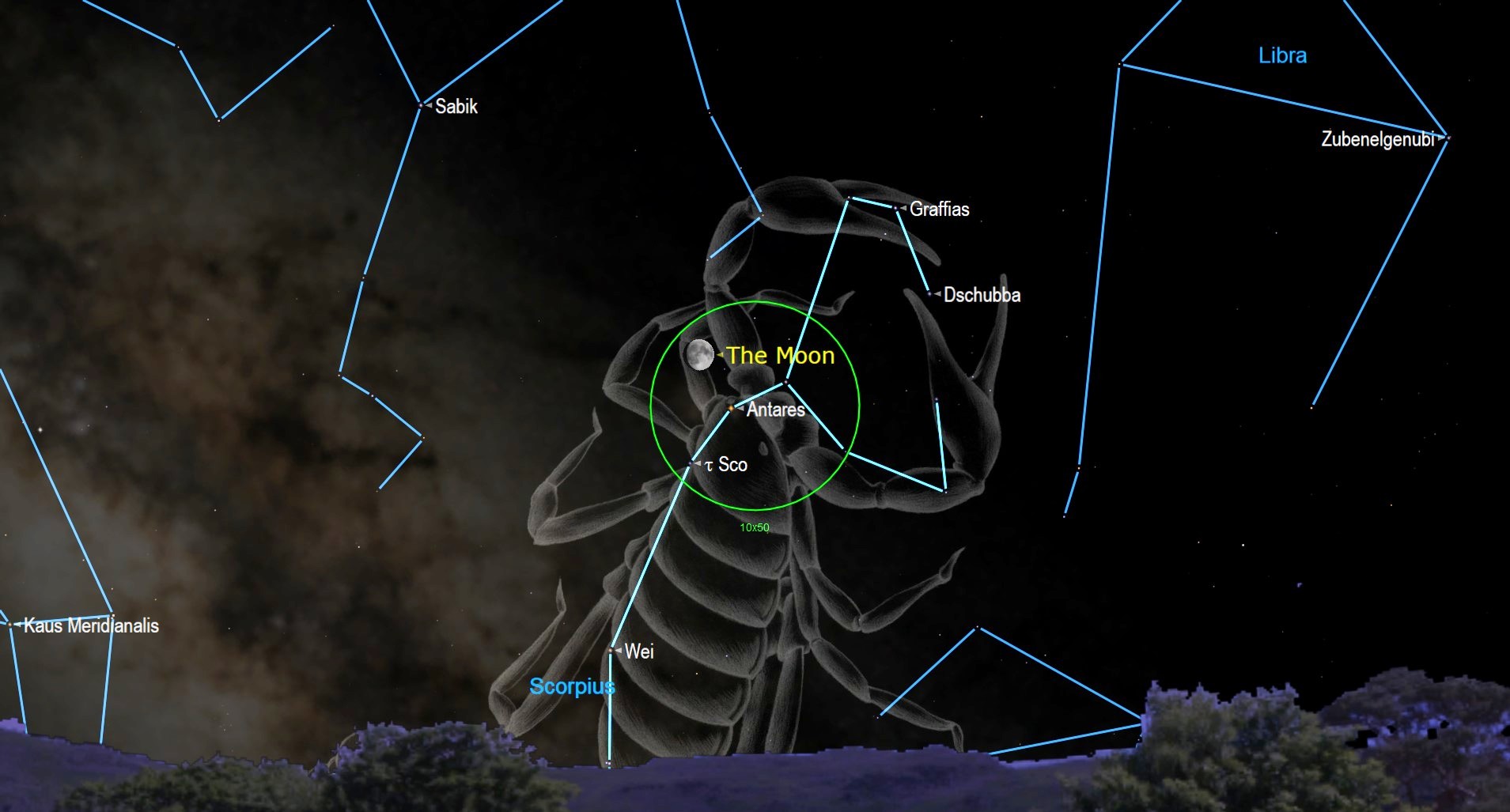Catch the moon shining next to the blood-red star Antares on Sunday
You'll be able to see the pair well through binoculars.

Look up to the southern sky on Sunday (July 10) to see the waxing gibbous moon shining brightly next to the luminous red star Antares.
The pair will be close enough to share the view in a pair of binoculars, as demonstrated by the green circle in the image above. You'll also be able to catch the duo using a low magnification telescope.
"Antares will sparkle two finger widths" to the lower right of the moon, according to geophysicist Chris Vaughan, an amateur astronomer with SkySafari Software who oversees Space.com's Night Sky calendar.
Related: The brightest planets in July's night sky: How to see them (and when)
The moon and Antares will traverse the sky together before setting in the early hours of Monday morning (July 11).
Antares makes for an interesting skywatching target due to its striking appearance. It not only marks the heart of the constellation Scorpius but is also the 15th-brightest star in the night sky, according to Constellation Guide.
"Its name is Latin for 'rival of Mars,' referring to its visual resemblance to that planet," wrote Vaughan.
Get the Space.com Newsletter
Breaking space news, the latest updates on rocket launches, skywatching events and more!
Antares is a red supergiant star that is nearing the end of its life. Once it has fully exhausted its fuel, the star will collapse and explode into a supernova, leaving behind a neutron star or black hole.

Looking for a telescope for the next stargazing event? We recommend the Celestron Astro Fi 102 as the top pick in our best beginner's telescope guide.
If you're looking for a telescope or binoculars to observe the moon and Antares, our guides for the best binoculars deals and the best telescope deals now can help. Our best cameras for astrophotography and best lenses for astrophotography can also help you prepare to capture the next skywatching sight on your own.
And if you fancy setting your sights primarily on the moon, Our ultimate guide to observing the moon will help you plan your next skywatching venture whether it be exploring the lunar seas, mountainous terrain or the many craters that blanket the landscape. You can also see where astronauts, rovers and landers have ventured with our Apollo landing sites observing guide.
Follow us on Twitter @Spacedotcom and on Facebook.
Join our Space Forums to keep talking space on the latest missions, night sky and more! And if you have a news tip, correction or comment, let us know at: community@space.com.

Daisy Dobrijevic joined Space.com in February 2022 having previously worked for our sister publication All About Space magazine as a staff writer. Before joining us, Daisy completed an editorial internship with the BBC Sky at Night Magazine and worked at the National Space Centre in Leicester, U.K., where she enjoyed communicating space science to the public. In 2021, Daisy completed a PhD in plant physiology and also holds a Master's in Environmental Science, she is currently based in Nottingham, U.K. Daisy is passionate about all things space, with a penchant for solar activity and space weather. She has a strong interest in astrotourism and loves nothing more than a good northern lights chase!
